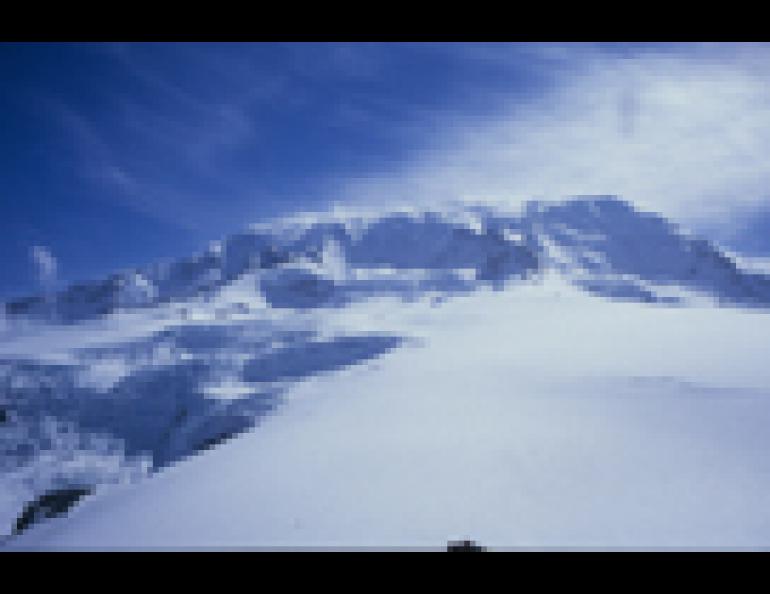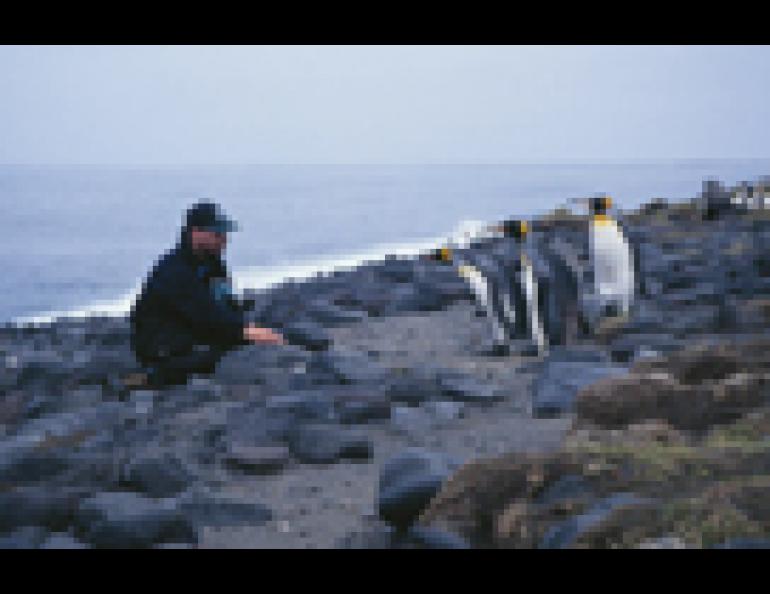

A Southern Glacier Mimics Its Northern Cousins
Heard Island is a volcanic bump in the Southern Hemisphere surrounded by thousands of miles of cold salt water. The island's only inhabitants are fur seals, penguins, and researchers visiting one of the island's glaciers for a few weeks.
Martin Truffer is in the last category. He's a glaciologist from Switzerland who has lived in Alaska the past few years while finishing his doctorate degree at the University of Alaska Fairbanks. He recently had the chance to study a southern-hemisphere glacier for the Australian Antarctic Division. He was surprised to discover the glacier was thinning at the same alarming rate as many Alaska glaciers. His finding helps to fill in a gap in scientists' knowledge of how climate change is affecting the Southern Ocean region.
The Southern Ocean is the body of water that encircles Antarctica on the bottom of the globe. Researchers don't have much evidence for climate change in the area because most clues come from enduring objects on land, not many of which exist in the Southern Ocean. Small enough to fit inside the natural bowls surrounding Anchorage or Fairbanks, Heard Island is a pinpoint of land in a vast blue swath of the planet Earth.
Owned by Australia, Heard Island consists of a 9,000-foot volcano named Big Ben, a long sandy spit that's a resting place for seals, and several small glaciers on the slopes of Big Ben. For six weeks, Truffer and a other scientists lived in a modified plastic water tank on Heard Island, venturing out every day to find something new about Brown Glacier. Australian scientists took aerial photographs of Brown Glacier in 1947; Truffer's job was to determine how much the three-mile-long glacier had changed in half a century.
Every day, Truffer and his colleagues noted characteristics of the glacier. They mapped the outline of the glacier and walked its boundaries with GPS units in hand. They tracked the speed at which the glacier's surface is moving. They bounced signals from a radar device through the glacier to determine its depth and found it was about 350 feet thick. They measured distances from the old moraine-rocks pushed forward and left in piles by past advances of the glacier-back to its current snout.
Truffer compared the present glacier to air photos taken more than 50 years earlier and calculated the changes. Thirty-eight percent of Brown Glacier has disappeared since 1947, and the glacier has thinned from the top by about one-and-one-half feet per year. The numbers rang familiar with Truffer, who did his Ph.D. work on Black Rapids Glacier in the Alaska Range.
Led by glaciologist Keith Echelmeyer, researchers at the Geophysical Institute have calculated volume changes for 41 glaciers in Alaska using USGS maps dating back to the 1950s, and laser measurements Echelmeyer has taken from his plane since the mid-1990s. A few glaciers have gained thickness in ice and snow, but most have melted into the shadows of their former selves. The average loss of thickness of those 41 Alaska glaciers is about one-and-one-half feet per year, the same rate Brown Glacier is disappearing. There's a small world for you.






